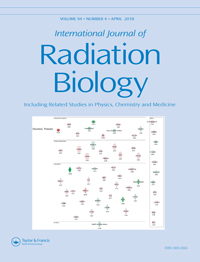View Item
- xmlui.general.dspace_homeCentros e Institutos de InvestigaciónCIAP. Centro de Investigaciones AgropecuariasInstituto de Patología VegetalArtículos científicosxmlui.ArtifactBrowser.ItemViewer.trail
- DSpace Home
- Centros e Institutos de Investigación
- CIAP. Centro de Investigaciones Agropecuarias
- Instituto de Patología Vegetal
- Artículos científicos
- View Item
Efficiency of cytogenetic methods in detecting a chromosome rearrangement induced by ionizing radiation in a cultivated chili pepper line (Capsicum baccatum var. pendulum – Solanaceae)
Abstract
Purpose: To locate transient chromosome aberrations on a selected pepper cultivar and determine the tracing efficiency of different cytogenetic methods. Materials and methods: Seeds from Capsicum baccatum var. pendulum cultivar ‘Cayenne’ were treated with an acute dose of X-rays (300 Gy) and chromosome aberrations were analysed by different cytogenetic methods [Feulgen, silver staining for nucleolus organizer regions (silver positive nucleolus organizing
[ver mas...]
Purpose: To locate transient chromosome aberrations on a selected pepper cultivar and determine the tracing efficiency of different cytogenetic methods. Materials and methods: Seeds from Capsicum baccatum var. pendulum cultivar ‘Cayenne’ were treated with an acute dose of X-rays (300 Gy) and chromosome aberrations were analysed by different cytogenetic methods [Feulgen, silver staining for nucleolus organizer regions (silver positive nucleolus organizing regions or AgNOR), fluorescent banding, fluorescence in situ hybridization (FISH) and meiotic analysis]. Results: A rearranged chromosome carrying two nucleolus organizing regions (NOR) induced by ionizing radiation was detected in the cultivar, with the occurrence of a small reciprocal exchange between a chromosome of pair no. 1 and another chromosome of pair no. 3, both carrying active NOR in short arms and associated chromomycin A positive/diamidino-phenylindole negative (CMA+/DAPI−) heterochromatin. Meiotic analysis showed a quadrivalent configuration, confirming a reciprocal translocation between two chromosomes. Conclusions: The use of X-rays in Capsicum allowed us to develop and identify a pepper line with structural rearrangements between two NOR-carrying chromosomes. We postulate that all the cytological techniques employed in this research were efficient in the search for chromosome aberrations. Particularly, Feulgen and AgNOR were the most suitable in those cases of transient rearrangements, whereas fluorescent banding and FISH were appropriate for intransitive ones.
[Cerrar]

Author
Scaldaferro, Marisel Analía;
Grabiele, Mauro;
Seijo, Jose Guillermo;
Debat, Humberto Julio;
Romero, María Victoria;
Ducasse, Daniel Adrian;
Prina, Alberto Raul;
Moscone, Eduardo Alberto;
Fuente
International Journal of Radiation Biology 90 (1) : 104-112 (2014)
Date
2014
ISSN
0955-3002
1362-3095
1362-3095
Formato
pdf
Tipo de documento
artículo
Palabras Claves
Derechos de acceso
Abierto
 Excepto donde se diga explicitamente, este item se publica bajo la siguiente descripción: Creative Commons Attribution-NonCommercial-ShareAlike 2.5 Unported (CC BY-NC-SA 2.5)
Excepto donde se diga explicitamente, este item se publica bajo la siguiente descripción: Creative Commons Attribution-NonCommercial-ShareAlike 2.5 Unported (CC BY-NC-SA 2.5)


